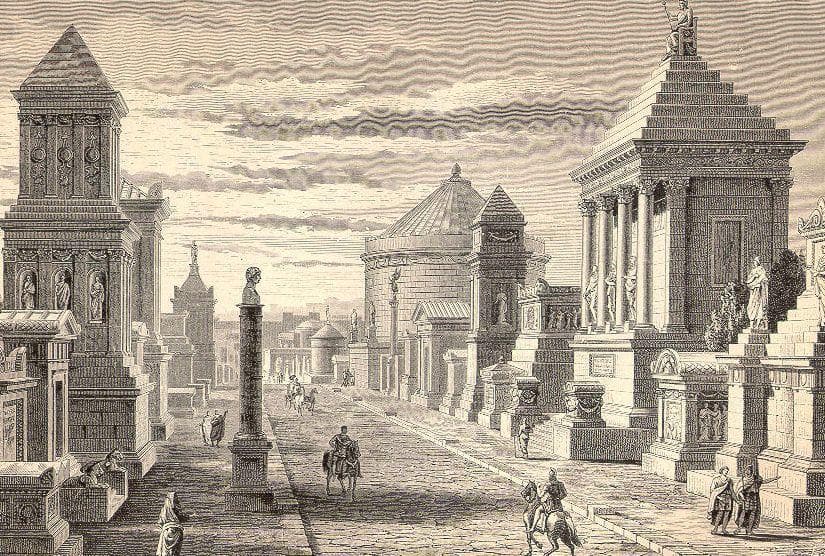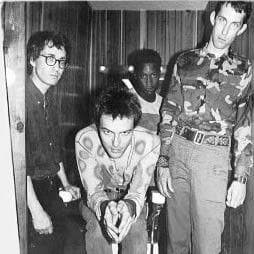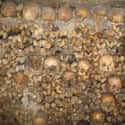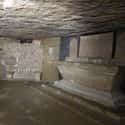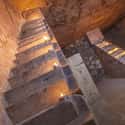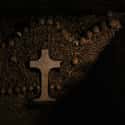-
(#1) A Controversial Video May Show A Man Who Died In The Catacombs
In the early 2000s, a video reportedly recovered from a dusty camera found in the catacombs aired on several TV channels. The director, who released the video as a part of a documentary on haunted locations, said he received the camera from so-called "cataphiles," unauthorized catacombs explorers. The origins of the video are murky, leading many to claim the video is a hoax.
Regardless of whether it's a fact or fiction, the video is chilling as it shows a man growing progressively unbalanced, panicked, and lost. No one knows what happened to the man in the video, which leads speculators to assume he died in the catacombs. Viewers pore over the video for clues like markings on the walls and mysterious, muffled sounds.
-
(#7) Exploring The Catacombs Can Be Life-Threatening
The catacombs are an inherently unnerving place to visit, and also dangerous to the ill-prepared. There is no definitive map of the dark, unstable passageways beyond the small section open to the public. Accordingly, a single wrong turn is enough to disorient someone to the point of becoming lost. It's a terrifying prospect, wandering underground, surrounded by bones, with no idea how to find daylight.
However, this isn't necessarily a death sentence, as a 17-year-old and 16-year-old found out in 2017. The teens spent three days lost in the catacombs. Fortunately, the authorities saved them after rescue dogs tracked them down. The pair went to a hospital for hypothermia treatment.
-
(#10) Royalty And Revolutionaries Alike Are Buried Within The Catacombs
With nearly seven million corpses strewn throughout the catacombs, it makes sense a few noteworthy people would crop up among them. Famous authors of old Parisian society, such as La Fontaine, Rabelais, and Perrault, are in the catacombs. Moreover, the bones of Louis XIV's preferred architect, Hardouin-Mansart, also ended up beneath the city as a final resting place.
During the French Revolution, a fair number of the executed also found their way into the tunnels. Disposed underground were the bodies of Antoine Lavoisier, who founded modern chemistry; Louis XVI's sister Madame Elisabeth; and Robespierre, the virulent and vocal figurehead of the uprising.
-
(#2) 18th-Century Paris Was Full Of Dead Bodies Escaping Their Graves
One of the most densely populated European cities, Paris, France, needed creative solutions to deal with the bodies accumulating when people passed. By the 18th century, Parisian cemeteries were so packed that frequent discoveries of corpses occurred during the digging of new graves.
Les Halles, once Paris's primary food market, bumped up against Les Innocents, the city's oldest cemetery, and the overcrowded burial ground quickly became a problem. Even the perfumeries in Les Halles couldn't mask the stench of the decaying bodies.
Louis XV and XVI tried to enforce proclamations ordering all burials to take place outside of the capital, but had little success. Few changes occurred until 1780, when heavy rain caused a wall in Les Innocents to collapse, filling the surrounding properties with bodies.
The city decided to move the bodies into the limestone quarries tucked away five stories beneath Paris. It took 12 years to transport all the bones from the city into the catacombs, and by the end, roughly six to seven million souls found their final resting place in the catacombs.
-
(#11) The Catacombs Were Originally Quarries Used To Build Paris
Paris's foundation is a massive limestone deposit formed over the past 45 million years. When the Romans mined the city, they established huge quarries that formed 187 miles of tunnels under the earth. Those same quarries would go on to provide the necessary materials to build Parisian landmarks like the Louvre and Notre-Dame Cathedral.
Later abandoned, the mined quarries inadvertently created the perfect storage solution for Paris’s substantial corpse problem.
-
(#8) There Are Heaps Of Bodies Behind The Catacombs' Ossuary
When tourists visit the catacombs, they can look forward to a few exhibits arranged for public consumption. There's the "Workshop," which harkens back to the original quarry, and the Port-Mahon corridor showcasing sculpted works by a skilled quarryman. It all leads to the ossuary, which is likely what most people picture when they think of the Paris Catacombs. Here, people can see the skulls and bones arranged in a decorative display - it's equal parts alluring and unsettling.
An inspector organized the display in the early 1800s as an alternative to how the original remains were in piles. If you glanced behind the wall of bones, you would see heaps of remains going back to the edges of the cavern.
New Random Displays Display All By Ranking
About This Tool
The Paris Catacombs is also known as the Tomb of Skulls. It is located in the Place Danfer-Rochereau in the 14th district of Paris today. It was originally an underground limestone quarry. In 1786, a plague broke out in Paris. In order to solve the problem of the insufficient cemetery and public health crisis, people transferred the bones buried in all cemeteries in the city. Since then, it has been used as a cemetery until 1814.
The Paris Catacombs is a museum now, and there is a small part of the tomb for public visiting. Do not be upset if you do not have a chance to visit it, there are some detailed information and pictures of the historical sites of the 18th century.
Our data comes from Ranker, If you want to participate in the ranking of items displayed on this page, please click here.

